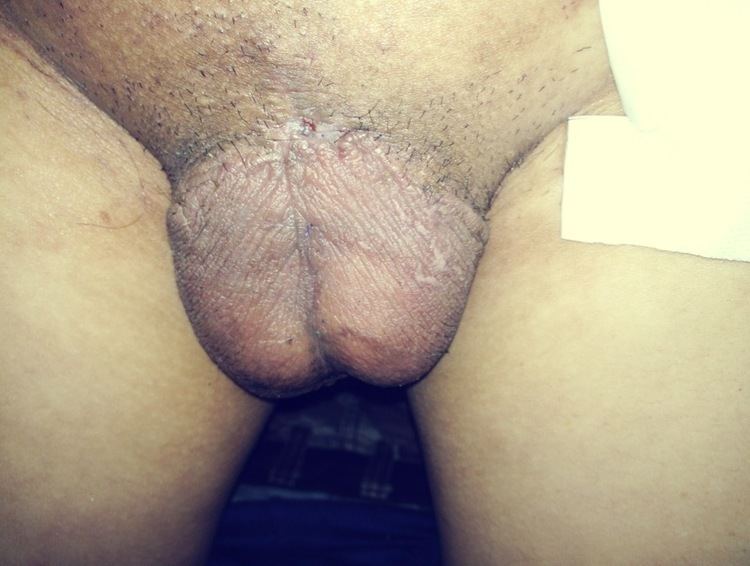 | ||
In ancient civilizations, the removal of the human penis was sometimes used to demonstrate superiority or dominance over an enemy. Armies were sometimes known to sever the penises of their enemies to count the dead, as well as for trophies. The practice of castration (removal of the testicles) sometimes involved the removal of all or part of the penis, generally with a tube inserted to keep the urethra open for urination. Castration has been used to create a class of servants or slaves called eunuchs in many different places and eras.
Contents
- Penis removal in medicine and psychology
- China
- Japan
- Arab slave trade
- Treatment and effects of penis removal
- Phalloplasty
- References
In the modern era, removing the human penis for any such activity is very rare (with some exceptions listed below), and references to removal of the penis are almost always symbolic. Castration is less rare, and is performed as a last resort in the treatment of androgen-sensitive prostate cancer.
Penis removal in medicine and psychology
Some men have penile amputations, known as penectomies, for medical reasons. Cancer, for example, sometimes necessitates removal of all or part of the penis. In some instances, botched childhood circumcisions have also resulted in full or partial penectomies. A man who has his penis removed may have one or more problems with their personality, urination, sex life, and vulnerable testicles; they may also experience a phantom penis (see phantom limb).
Genital surgical procedures for trans women (transgender or transsexual women) undergoing sex reassignment surgery, do not usually involve the complete removal of the penis; part or all of the glans is usually kept and reshaped as a clitoris, and the skin of the penile shaft may also be inverted to form the vagina. When procedures such as this are not possible, other procedures such as colovaginoplasty are used which do involve the removal of the penis.
Issues related to the removal of the penis appear in psychology, for example in the condition known as castration anxiety. Others, who associate the organ with rape and male dominance and aggression, may consciously or subconsciously see the organ (their own or those of others) as a weapon and express a hatred for it, potentially desiring to see it violently removed.
Some men have undergone penectomies as a voluntary body modification, thus including it as part of a body dysmorphic disorder. Professional opinion is divided regarding the desire for penile amputation as a pathology, much as all other forms of treatment by amputation for body dysmorphic disorder. Voluntary subincision, removal of the glans penis, and bifurcation of the penis are related topics.
China
In ancient China, for crimes including adultery, "licentious" and "promiscuous" activity, males had their penises removed in addition to being castrated. This was one of the Five Punishments that could be legally inflicted on criminals in China. They were designed to permanently disfigure for life. "Castration", in China, meant the severing of the penis in addition to the testicles, after which male offenders were sentenced to work in the palace as eunuchs. The punishment was called "gongxing" (宫刑), which meant "palace punishment", since castrated men would be enslaved to work in the harem of the palace. It was also called "fuxing"(腐刑). Husbands who committed adultery were punished with castration as required under Zhou Dynasty law. While men were castrated, women who committed adultery were punished by confinement. The exact crime was called gong, and referred to "immoral" sex between males and females. The punishment stated, "If a male and female engage in intercourse without morality, their punishments shall be castration and sequestration [respectively]."
Japan
The removal of the penis was used as a punishment for men in the Heian period in Japan, where it replaced execution. It was called rasetsu 羅切 (らせつ), and was separate from castration which was called kyūkei 宮刑 (きゅうけい). Rasetsu was done voluntarily by some Japanese Buddhist priests to ensure celibacy. Rasetsu was also known in Edo period Japan.
The word rasetsu was made out of the components "ra" from "mara" which meant penis, and "setsu", which meant cutting.
The word rasetsu was used in Japanese literature.
Kyuukei in Japanese law referred to the punishment of castration, which was used for male offenders, and confinement for females.
Arab slave trade
The Arab slave trade provided many eunuchs who were more highly prized, and priced. African boys were generally subject to penis removal as well as castration.
Treatment and effects of penis removal
A study of penis reattachment in China found that in a group of 50 men, all but one reacquired functionality, even though some involved full reconstructive surgery using tissue and bone. Reportedly some of these men later fathered children.
Phalloplasty
If reattachment is not an option (such as the not being reattached long after 24 hours), doctors can reconstruct a penis from muscle and skin grafted from another part of the body like the forearm. However, a penile implant is needed for an erection to be possible, the reconstructed penis would look strange and would either not be able to ejaculate, or ejaculate with less force. The patients are often dissatisfied with the reconstructed penis. Standing during urination is an advantage offered by a reconstructed penis. If penis reconstruction is not done, the patient will have to squat in order to urinate since doctors reroute the entrance of the urethra to below the scrotum.
